Greetings, fellow SkyWatchers! If you’re not about to get buried under a blanket of snow, then why not spend some time out under blanket of stars with this weekend’s stellar project? This four star adventure is sure to warm you up. Need more? Then I’ll show you were to look for a comet and a “snow ball” of stars! Of course, we’ve got plenty to learn about the history and mystery of what we’re looking at, so whenever you’re ready? I’ll see you in the backyard…
Friday, February 5, 2010 – On this date in 1963, Maarten Schmidt measured the first quasar redshift, and in 1974, Mariner 10 took the first close-up images of Venus. This date in 1971 was also important for two men named Shepard and Mitchell, whose Apollo 14 module had just touched down in the Fra Mauro highlands. At 14:54 UTC, Alan Shepard stepped onto the surface and said, ‘‘It’s been a long way, but we’re here.’’
If you think these two Apollo astronauts traveled a long way, then let’s take a look at some stars that have been at if for a couple of million years! Near the heart of the Orion Nebula, two massive binary stars were involved in a head-on collision, exchanging stars. Iota Orionis became a new binary system, but two ‘‘runaways’’ left the scene of the accident at a speed of 200 kilometers per second. Tonight we’ll look at these two challenging stars – one to the north and one to the south.
North is AE Aurigae (RA 05 16 18 Dec +34 18 44). Its two-letter designation shows AE is a variable star, and it flirts with unaided visibility between magnitudes 5 and 6. On a dark night, you can usually spot AE hanging out on the northwestern perimeter of a spangle of stars about two finger-widths east of Iota Aurigae. With a distance of 1,450 light-years, it’s not surprising that its faint, but AE would be a full magnitude brighter if it wasn’t in a dust cloud! AE Aurigae is a hot star, and its simple spectrum and rapid movement against the interstellar medium make it ideal for studying these primal gases. Examined with a telescope at low magnification, you can enjoy the illumination created by the ‘‘Flaming Star’’!
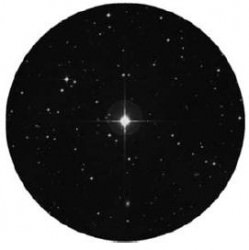 To the south is our runaway collision victim Mu Columbae. Draw an imaginary line due south from the Orion Nebula past Lepus, and you’ll encounter dim Mu (RA 05 45 59 Dec -32 18 23) just northeast of Alpha Columbae. Cruising along at 117 kilometers per second, this white-hot star sheds about one-tenth of a millionth of its mass every year. Holding a steady magnitude 5, and now 1,300 light-years distant, Mu is one of the very few of its type easily seen by the unaided eye. What can’t be seen, however, is the signature left by the star in the warm interstellar medium. Like footprints in the sand, high-resolution spectrographs show the moving star left a trail in its wake!
To the south is our runaway collision victim Mu Columbae. Draw an imaginary line due south from the Orion Nebula past Lepus, and you’ll encounter dim Mu (RA 05 45 59 Dec -32 18 23) just northeast of Alpha Columbae. Cruising along at 117 kilometers per second, this white-hot star sheds about one-tenth of a millionth of its mass every year. Holding a steady magnitude 5, and now 1,300 light-years distant, Mu is one of the very few of its type easily seen by the unaided eye. What can’t be seen, however, is the signature left by the star in the warm interstellar medium. Like footprints in the sand, high-resolution spectrographs show the moving star left a trail in its wake!
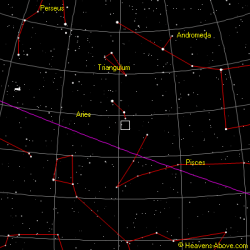 Are you ready to take on a more challenging traveler? Then why not seek out 11.8 magnitude Comet Tritton! Now cruising through the constellation of Aries (RA 1h 53.5m Dec 17° 39′), this faint fuzzy won’t be the easiest of targets to spot – but then it wouldn’t be a challenge, would it? Comet 157P Tritton was discovered by Keith Tritton (U. K. Schmidt Telescope Unit, Coonabarabran) on a deep IIIa-J exposure made with the 122-cm Schmidt telescope on February 11, 1978. Now, almost 32 years later to the date, it’s back again on its every 6.33 year journey around our Sun. Although it won’t reach perihelion until February 20, its original estimated return brightness was only expected to reach magnitude 16 and now it is far exceeding expectations. Don’t expect to see a flaming ball exhibiting a tail because that’s not going to happen… but congratulate yourself if you spot a diffuse, round area about the size of a small planetary nebula!
Are you ready to take on a more challenging traveler? Then why not seek out 11.8 magnitude Comet Tritton! Now cruising through the constellation of Aries (RA 1h 53.5m Dec 17° 39′), this faint fuzzy won’t be the easiest of targets to spot – but then it wouldn’t be a challenge, would it? Comet 157P Tritton was discovered by Keith Tritton (U. K. Schmidt Telescope Unit, Coonabarabran) on a deep IIIa-J exposure made with the 122-cm Schmidt telescope on February 11, 1978. Now, almost 32 years later to the date, it’s back again on its every 6.33 year journey around our Sun. Although it won’t reach perihelion until February 20, its original estimated return brightness was only expected to reach magnitude 16 and now it is far exceeding expectations. Don’t expect to see a flaming ball exhibiting a tail because that’s not going to happen… but congratulate yourself if you spot a diffuse, round area about the size of a small planetary nebula!
 Saturday, February 6, 2010 – This date marks the 1991 fiery return of the Soviet space station Salyut 7. Launched in 1982, electrical and maneuvering problems plagued the mission, but cosmonauts were able to stay onboard for as long as 8 months before returning. Abandoned in 1986, equipment and supplies were transferred to the orbiting Mir. If you’d like to spot a space station, why not use a great tool like Heavens Above to let you know when and where to look for the ISS!
Saturday, February 6, 2010 – This date marks the 1991 fiery return of the Soviet space station Salyut 7. Launched in 1982, electrical and maneuvering problems plagued the mission, but cosmonauts were able to stay onboard for as long as 8 months before returning. Abandoned in 1986, equipment and supplies were transferred to the orbiting Mir. If you’d like to spot a space station, why not use a great tool like Heavens Above to let you know when and where to look for the ISS!
Tonight, our traveling project concludes at the tip of Orion’s sword – Iota Orionis – the third player in our ‘‘runaway’’ drama (RA 05 35 25 Dec -05 54 35).
Hatsya (Bright One of the Sword) is a spectroscopic binary resulting from the collision we studied yesterday. Iota consists of two powerful, white hot suns, orbiting less than one Astronomical Unit (AU) apart and nearly touching at one point during their monthly orbit – a powerful X-ray source! In binoculars, Hatsya appears in a charming collection of stars, while small telescopes reveal a colorful red/blue triple system. Surrounding Iota is a faint stardust nebula, NGC 1980, often mistaken as part of M42.
Now hop down to Lepus for a faint, round, fuzzy object that’s achievable in a small telescope or binoculars – Messier Object 79 (RA 05 24 10 Dec +24 31 27).
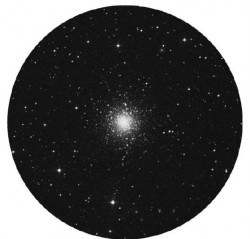 In small binoculars this small cluster is nothing more than a faint stellar snowball, but the true beauty of this object is revealed in large telescopes. Behold a globular cluster, one of many densely packed balls of stars that mainly congregate near our galactic center. Discovered by Pierre Mechain and cataloged by Messier in 1780, M79 is on the opposite side of our galaxy, and about 4,200 light-years away. Spanning 118 light-years, this starry sphere may not be an original member of our galaxy at all but an import. Although we can’t see it happening, the Canis Major Dwarf galaxy is slowly being incorporated into our own system, and M79 might very well be a product of this union! Thanks to Mechain and Messier’s careful notes, William Herschel later recovered M79 and resolved its stars. Although the practice of maintaining an astronomy diary isn’t for everyone, keeping simple records is very rewarding. Make note of the object’s appearance, equipment used, and sky conditions. Observing diaries just like those of Messier and Me´chain have led countless astronomers along the road of discovery to all the deep-sky objects we know today!
In small binoculars this small cluster is nothing more than a faint stellar snowball, but the true beauty of this object is revealed in large telescopes. Behold a globular cluster, one of many densely packed balls of stars that mainly congregate near our galactic center. Discovered by Pierre Mechain and cataloged by Messier in 1780, M79 is on the opposite side of our galaxy, and about 4,200 light-years away. Spanning 118 light-years, this starry sphere may not be an original member of our galaxy at all but an import. Although we can’t see it happening, the Canis Major Dwarf galaxy is slowly being incorporated into our own system, and M79 might very well be a product of this union! Thanks to Mechain and Messier’s careful notes, William Herschel later recovered M79 and resolved its stars. Although the practice of maintaining an astronomy diary isn’t for everyone, keeping simple records is very rewarding. Make note of the object’s appearance, equipment used, and sky conditions. Observing diaries just like those of Messier and Me´chain have led countless astronomers along the road of discovery to all the deep-sky objects we know today!
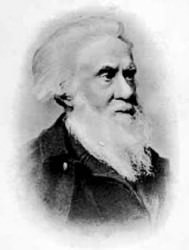 Sunday, February 7, 2010 – On this date in 1889, the Astronomical Society of the Pacific was born. In 1926 celebrated cosmonaut Konstantin Feoktistov, who flew Voskhod 1 and helped design Salyut and Mir, was born. Yet most noteworthy today is the 1824 birth of amateur astronomer William Huggins. By age 30, he’d built his own private observatory and through his studies made important contributions to astronomy. According to scientists Kirchoff and Bunsen, the chemical composition of minerals could be determined from their spectral signatures. The inquisitive Huggins began comparing mineral samples to the spectra of celestial objects. Although his experimental methods were crude by today’s standards, his calculations were perfect. Huggins proved the spectrum of the Orion Nebula was like that of a pure gaseous emission, while the spectrum of the Andromeda Nebula was similar to that of starlight – and this long before confirmation of its galactic nature!
Sunday, February 7, 2010 – On this date in 1889, the Astronomical Society of the Pacific was born. In 1926 celebrated cosmonaut Konstantin Feoktistov, who flew Voskhod 1 and helped design Salyut and Mir, was born. Yet most noteworthy today is the 1824 birth of amateur astronomer William Huggins. By age 30, he’d built his own private observatory and through his studies made important contributions to astronomy. According to scientists Kirchoff and Bunsen, the chemical composition of minerals could be determined from their spectral signatures. The inquisitive Huggins began comparing mineral samples to the spectra of celestial objects. Although his experimental methods were crude by today’s standards, his calculations were perfect. Huggins proved the spectrum of the Orion Nebula was like that of a pure gaseous emission, while the spectrum of the Andromeda Nebula was similar to that of starlight – and this long before confirmation of its galactic nature!
Huggins was also the first amateur to measure the radial velocities of stars from their spectral shifts. Although most people assume only professional scientists can make such measurements, many of today’s amateurs (unpaid, but not unskilled!) have measured spectra. Tonight let’s look at a star whose radial velocity has been studied both professionally and personally – Kappa Orionis (RA 05 47 45 Dec -09 40 10).
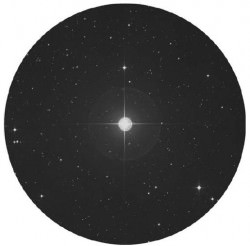 Named Saiph, it’s the often-overlooked eastern ‘‘foot’’ of Orion. According to spectral analysis, this 722 light-year distant blue supergiant star is moving away from us at 21 kilometers per second. Roughly the same type, size, and distance as Rigel, it looks far fainter. But why? Oddly enough, Saiph has an extremely high temperature, burning more than 1,500 K hotter. Near the point where helium fusion replaces hydrogen fusion, the majority of its variable light output is in the ultraviolet band. And as Huggins once said: ‘‘It is remarkable that the elements diffused through the host of stars are some of the most closely connected with the living organisms of our globe.’’
Named Saiph, it’s the often-overlooked eastern ‘‘foot’’ of Orion. According to spectral analysis, this 722 light-year distant blue supergiant star is moving away from us at 21 kilometers per second. Roughly the same type, size, and distance as Rigel, it looks far fainter. But why? Oddly enough, Saiph has an extremely high temperature, burning more than 1,500 K hotter. Near the point where helium fusion replaces hydrogen fusion, the majority of its variable light output is in the ultraviolet band. And as Huggins once said: ‘‘It is remarkable that the elements diffused through the host of stars are some of the most closely connected with the living organisms of our globe.’’
Until next week? Dodge the snow flakes and dance in the starlight!
This week’s awesome image are (in order of appearance): AE Aurigae and Mu Columbae – Palomar Observatory, courtesy of Caltech, Comet Tritton rough finder chart courtesy of Heavens Above, Salyut 7 as seen from orbiting Soyuz courtesy of NASA, Iota Orionis and Messier 79 – Palomar Observatory courtesy of Caltech, William Huggins historical image and Kappa Orionis – Palomar Observatory, courtesy of Caletch. We thank you so much!


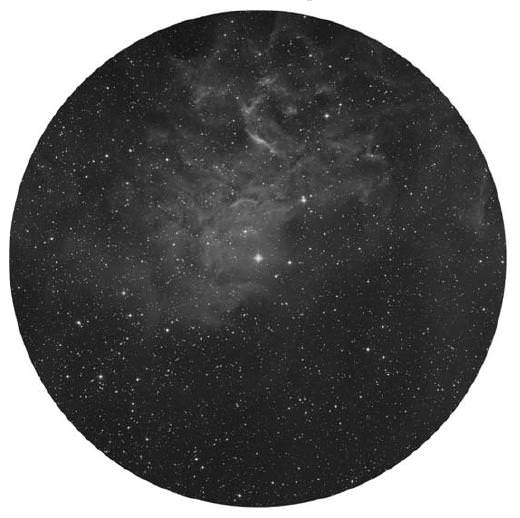
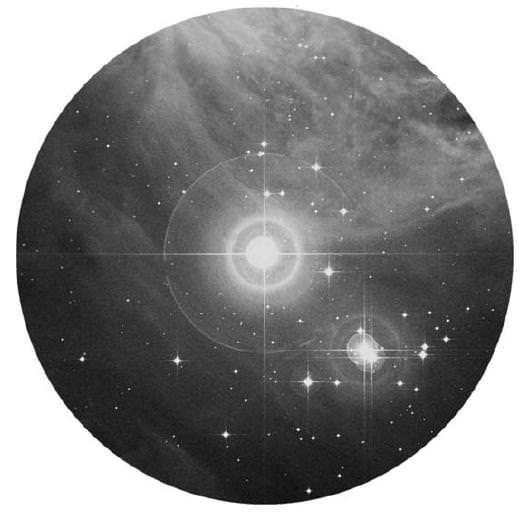
Wow, now that is just totally amazing.
RT
http://www.internet-anonymity.se.tc
Wow, that’s spam.